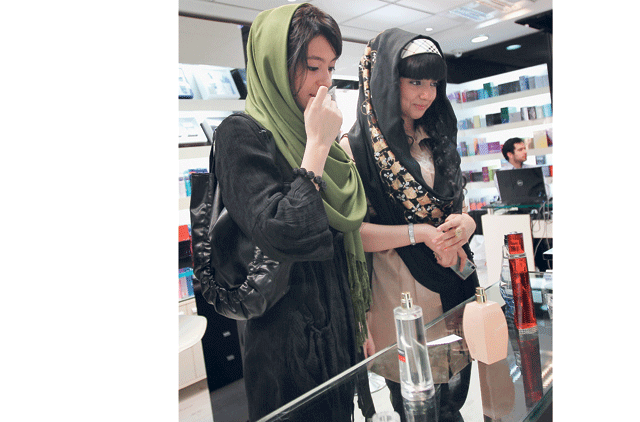
Tehran: Iran has become the Middle East's second largest market for beauty products such as lipstick and nail polish — after the goods were banned after the 1979 Islamic revolution.
Following the revolution, "morality" police patrolled the streets, fining or even arresting women who flaunted the strict rules, which were eased after the 1980-1988 Iran-Iraq war.
And most women were quick to catch on after Iran decided in the mid-1990s to allow imports of beauty products.
At that time many women began taking to the streets wearing makeup, especially chic young urbanites.
Today Iranians spend about $2 billion (Dh7.3 billion) a year on cosmetics, and the country of 74 million accounts for 29 per cent of the Middle East market, a recent survey revealed.
The biggest Middle East market for cosmetics was Saudi Arabia, the survey found.
Most beauty products were now imported or smuggled into Iran, as the country produced few of its own.
Many of the most popular international brands such as Yves Saint Laurent, Guerlain, L'Oreal and Bourjois were now available at uptown malls and stores in cities and large towns.
"Most specialists estimate that about $700 to $750 million worth of products are imported to Iran illegally," said Abbas Najafi, the head of Iran's counter-trafficking bureau.
Vista Bavar, who promotes the recently launched European Caprice brand in Iran, agreed that "many products" were smuggled into Iran".
"The health ministry is very precise about its criteria, which is very good as consumers can be sure about the quality when there is an official seal of approval," Bavar said.
"But 50 per cent duty fees and red tape work against legal imports," the entrepreneur said.
However those in the beauty business said smuggled goods tended to be of poor quality.
Low-quality products
"Over the past years the market has been flooded with low-quality Chinese products which do not meet the required standards," said a major cosmetics importer who asked not to be named.
But "Chinese products account for about 30 per cent of illegal imports and they have their own market in provincial areas and among people with lower income," he said.
A survey conducted by TMBA, a private economic research institute, showed about 14 million urban Iranian women aged between 15 and 45 spent seven dollars on average per month on cosmetics.
That was a fair proportion when the minimum wage in Iran was $300 dollars and the average monthly income was between $600 and $700.
TMBA said Iranians splurged on cosmetics probably because most of the population was young and urban.
A total of half the population is under 30 years old, and 65 per cent is urban.
Since 1979, women have had to observe the Islamic dress code, mandating that hair and body be modestly covered in public.
However women have also been challenging the dress code by sporting shorter, tighter Islamic overcoats and locks of dyed hair under loosely-worn scarves.
This has drawn condemnation and occasional crackdowns by the hardliners in power. Women in government jobs still cannot wear makeup at work.












